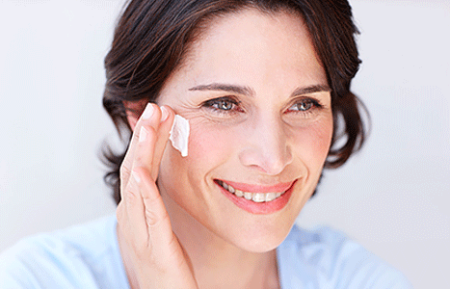Scars: Overview
What exactly is a scar?
When you injure your skin, your body naturally repairs the damage. How your body repairs this damage depends on how deeply the injury penetrates your skin.
If the injury damages the top layer of your skin, you’ll likely see new skin when the wound heals. To repair damage that goes deeper than the first layer, your body makes a tissue that’s thicker than your skin. This thicker tissue often becomes a scar.
New scars have a pink to reddish color. As a scar matures, it often turns lighter or darker than your skin.
Most scars are flat, and the skin on top tends to look wrinkled.
Treatment can make a scar less noticeable
If you dislike the look of a scar, treatment may make it less noticeable.

If your body makes lots of extra tissue, you’ll see a raised scar. Sometimes, the body makes an excessive amount of extra tissue and you see a raised scar that is bigger than the original wound. This type of raised scar is called a keloid.
You may see a sunken scar if something causes a lot of inflammation in your skin, such as acne or chickenpox. This happens because the inflammation destroys collagen in your skin. This type of scar tends to appear when acne or chickenpox heals.
The right wound care can prevent or lessen some scars
How you care for a wound affects how your skin heals. With the right wound care, it’s possible to minimize scarring. Sometimes, you can prevent a scar from forming.
When caring for a wound, it’s important to keep it clean. When cleaning a wound, use soap and water. Never use hydrogen peroxide, which can further damage your skin.
It’s also important to get stitches when you need them. This can help your skin heal and lessen scarring.
To find out how to care for minor wounds, go to Proper wound care: How to minimize a scar.
A scar increases your risk of getting skin cancer
Reduce your risk by covering scars with clothing or a broad-spectrum sunscreen that has SPF 30 or higher. Apply daily.

Treatment can make a scar less noticeable
If you develop a scar, it may become less noticeable over time. Some scars, such as keloids and sunken acne scars, don’t fade.
Not every scar requires treatment. You may want to consider treatment if a scar makes you feel uncomfortable. Treatment can reduce symptoms, such as pain and itch. When a scar reduces your ability to move, treatment can often help you regain some movement.
A board-certified dermatologist can tell you what type of treatment may diminish your scar. Treatment varies for each type of scar.
Images
Image 2: Getty Images
References
Gold MH, McGuire M, et al. “Updated international clinical recommendations on scar management: Part 2—Algorithms for scar prevention and treatment.” Dermatol Surg. 2014;40(8):825-31.
Stier MF, Hirsch RJ. “Rejuvenation of scars and striae.” In: Hirsch RJ, et al. Aesthetic rejuvenation. McGraw Hill Medical, China, 2009:210-24.
Tziotzios C, Profyris C, et al. “Cutaneous scarring: Pathophysiology, molecular mechanisms, and scar reduction therapeutics Part II. Strategies to reduce scar formation after dermatologic procedures.” J Am Acad Dermatol. 2012;66(1):13-24.
 Atopic dermatitis: More FDA-approved treatments
Atopic dermatitis: More FDA-approved treatments
 Biosimilars: 14 FAQs
Biosimilars: 14 FAQs
 How to trim your nails
How to trim your nails
 Relieve uncontrollably itchy skin
Relieve uncontrollably itchy skin
 Fade dark spots
Fade dark spots
 Untreatable razor bumps or acne?
Untreatable razor bumps or acne?
 Tattoo removal
Tattoo removal
 Scar treatment
Scar treatment
 Free materials to help raise skin cancer awareness
Free materials to help raise skin cancer awareness
 Dermatologist-approved lesson plans, activities you can use
Dermatologist-approved lesson plans, activities you can use
 Find a Dermatologist
Find a Dermatologist
 What is a dermatologist?
What is a dermatologist?